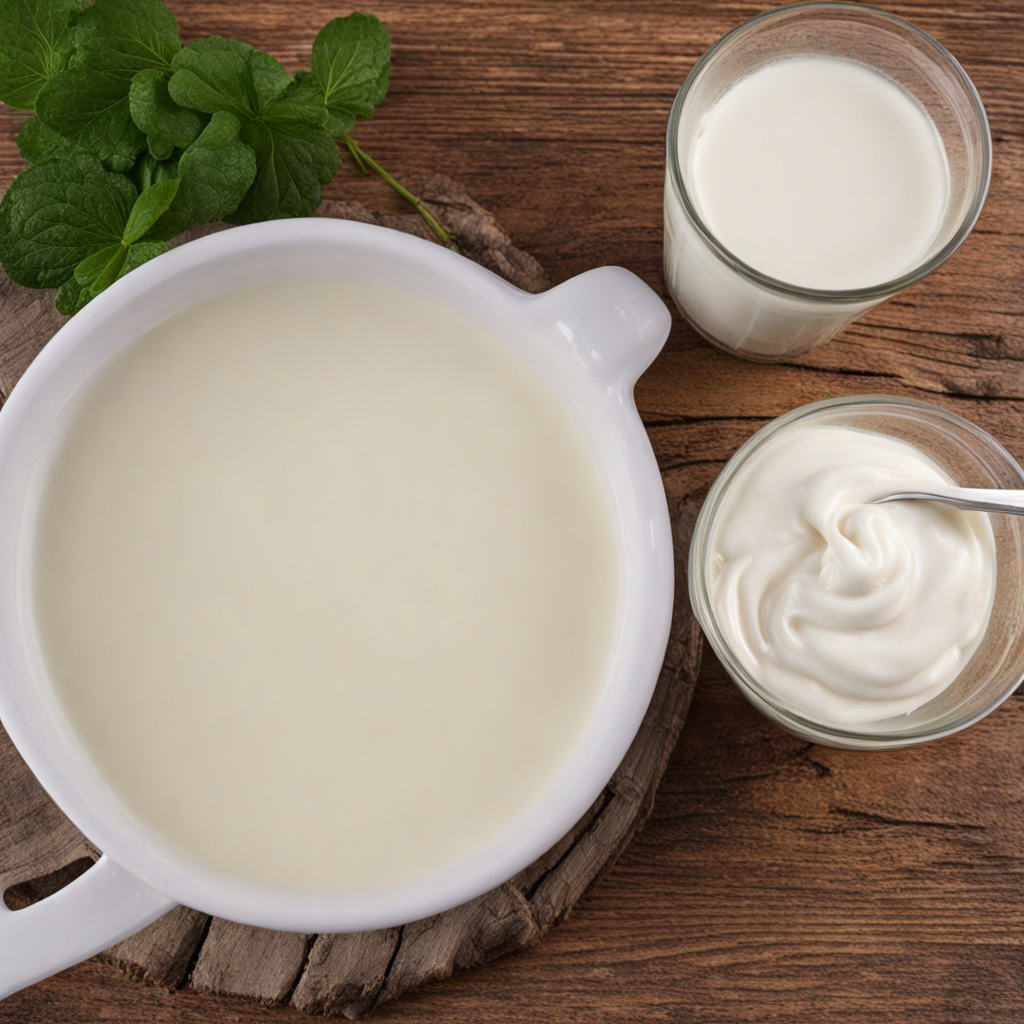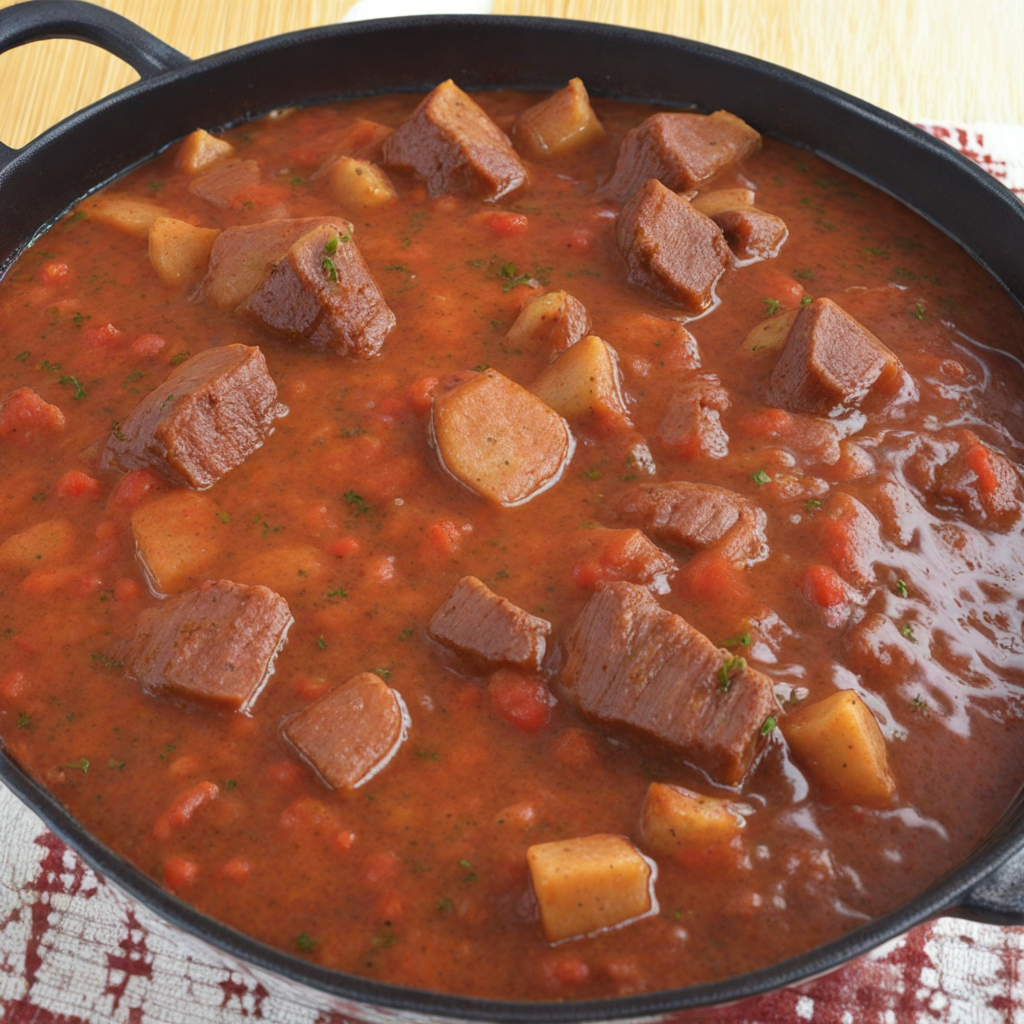Kiselo Mleko
Kiselo Mleko, a traditional Serbian delicacy, is a type of fermented milk that boasts a rich, creamy texture and a slightly tangy flavor. This delightful dairy product is created through the natural fermentation of cow's milk, using specific bacterial cultures that transform the milk into a thick, yogurt-like consistency. The result is a smooth and luscious treat that can be enjoyed on its own or incorporated into various dishes. Its unique taste profile balances the subtle sweetness of the milk with a refreshing acidity, making it a versatile ingredient in both savory and sweet recipes. In Serbia, Kiselo Mleko is more than just a food item; it is a staple in many households. Often served as a breakfast dish, it can be enjoyed plain or topped with fresh fruits, honey, or nuts for added flavor and nutrition. Additionally, it pairs beautifully with traditional Serbian breads, making it a perfect accompaniment to hearty meals. The probiotic qualities of Kiselo Mleko also contribute to its popularity, as it is known to promote digestive health and overall well-being, making it a nourishing choice for those seeking a wholesome diet. Culinary enthusiasts will appreciate the versatility of Kiselo Mleko, as it can be used in an array of dishes, from soups and sauces to baked goods and desserts. Its creamy texture adds depth to recipes, while its tanginess can brighten flavors and enhance the overall taste experience. Whether enjoyed as a refreshing snack or incorporated into your favorite recipes, Kiselo Mleko offers a unique taste of Serbian cuisine that is sure to delight adventurous palates and food lovers alike.
How It Became This Dish
The History of Кисело Млеко: A Serbian Culinary Treasure Kiselo mlekо, or sour milk, is a staple in Serbian cuisine that embodies not just a beloved food item but a rich tapestry of history, culture, and tradition. This fermented dairy product, known for its tangy flavor and creamy texture, has origins that trace back thousands of years, intertwining with the very essence of Serbian life. #### Origins and Early History The roots of kiselo mlekо can be traced back to ancient civilizations that first recognized the benefits of fermenting milk. Archaeological evidence suggests that dairy fermentation began around 8000 to 7000 BCE, coinciding with the domestication of cattle in the Fertile Crescent. It is believed that the practice spread throughout Europe and the Balkans as people migrated and settled, bringing their culinary traditions with them. In Serbia, the art of making kiselo mlekо became particularly significant. The Slavs, who began settling in the Balkans around the 6th century AD, brought with them their own dairy practices, which likely included the fermentation of milk. Traditionally, kiselo mlekо was made by allowing milk to sour naturally, utilizing the wild bacteria present in the environment. Over time, this practice evolved, leading to more controlled methods that improved the consistency and flavor of the final product. #### Cultural Significance Kiselo mlekо is more than just a food item; it is a cultural symbol that represents the essence of Serbian hospitality and culinary heritage. In Serbian households, kiselo mlekо is a common accompaniment to many meals, served with bread, potatoes, or as a side to meat dishes. It is often enjoyed plain or incorporated into various recipes, including soups, salads, and pastries. One of the most culturally significant aspects of kiselo mlekо is its role in family gatherings and celebrations. It is often included in traditional feasts, symbolizing abundance and health. The act of sharing kiselo mlekо with guests signifies warmth and generosity, aligning with the broader Slavic tradition of hospitality. Kiselo mlekо also plays a significant role in Serbian folklore and healing practices. Historically, it has been regarded as a health food, cherished for its probiotic properties that promote digestion and overall well-being. In rural communities, it was often used as a remedy for various ailments, showcasing the deep-seated belief in the healing powers of traditional foods. #### Development Through Time As Serbia underwent various political and social changes throughout the centuries, so too did its culinary practices, including the production and consumption of kiselo mlekо. The Ottoman Empire’s influence during the 15th to 19th centuries introduced new culinary elements, yet kiselo mlekо remained a steadfast staple in Serbian diets. During this time, the process of making kiselo mlekо became more refined, and its popularity spread beyond rural households into urban areas. The industrialization of Serbia in the late 19th and early 20th centuries ushered in a new era for kiselo mlekо. As cities expanded and populations grew, the demand for dairy products surged. This led to the establishment of dairy cooperatives and factories, which began producing kiselo mlekо on a larger scale. The introduction of pasteurization and modern fermentation techniques improved the product's safety and shelf life, making kiselo mlekо more accessible to the urban population. In the mid-20th century, especially during the socialist period, kiselo mlekо became a ubiquitous part of the Yugoslav diet, celebrated for its affordability and nutritional value. State-run dairy farms produced kiselo mlekо, which was often sold in glass jars or plastic containers. It became a staple in school cafeterias and public institutions, reinforcing its status as a fundamental component of the national diet. #### Contemporary Revival and Global Recognition The fall of Yugoslavia in the 1990s brought significant changes to Serbia's food landscape, but kiselo mlekо endured as a beloved traditional food. In recent years, there has been a resurgence of interest in artisanal and organic food production, leading to a revival of traditional methods for making kiselo mlekо. Local farmers and small-scale producers are once again embracing the age-old fermentation techniques, often using raw milk from grass-fed cows, which enhances the flavor and nutritional profile of the product. Today, kiselo mlekо is gaining recognition beyond Serbian borders. With the rise of global interest in fermented foods and probiotics, this traditional dairy product is finding its way onto international menus. Serbian diaspora communities have played a crucial role in promoting kiselo mlekо abroad, introducing it to new audiences and inspiring a fusion of culinary traditions. In Serbia, kiselo mlekо remains a symbol of national pride and cultural identity. It is commonly found in supermarkets and local markets, often produced by both large dairy companies and small family-run farms. The product comes in various forms, including low-fat and whole milk versions, catering to diverse consumer preferences. Furthermore, it is often used in modern culinary applications, from gourmet dishes to trendy health bowls, demonstrating its adaptability and timeless appeal. #### Conclusion The history of kiselo mlekо is a testament to the resilience of Serbian culinary traditions. This simple yet profound fermented dairy product has traversed centuries, evolving from ancient practices to a modern staple, while maintaining its cultural significance. Whether enjoyed in a traditional setting or as part of contemporary cuisine, kiselo mlekо continues to be a cherished element of Serbian identity, embodying the warmth of hospitality and the richness of a shared culinary heritage. As it moves forward into the global culinary scene, kiselo mlekо stands as a delicious reminder of the past and a bridge to the future, inviting all to partake in its tangy goodness.
You may like
Discover local flavors from Serbia







